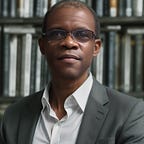Mastering Complexity: How Framework Thinking Drives Strategic Success in Large Corporations
Framework Thinking: An Overview
Framework thinking is a strategic approach that involves constructing a comprehensive structure to contextualize all known variables within a system. This process is crucial for understanding the complexities of modern organizational environments and for making informed decisions that align with overarching goals.
Constructing a Framework to Contextualize Known Variables
The first step in framework thinking is to identify and contextualize the known variables within the system. These variables can include internal factors such as resources, capabilities, and processes, as well as external factors like market trends, regulatory requirements, and technological advancements. By mapping out these variables, leaders can develop a clear understanding of the environment in which they operate.
This framework serves as a mental model that helps in visualizing the relationships and interactions between different elements. It allows leaders to see the big picture, identify critical areas that require attention, and understand how changes in one part of the system can impact others. This holistic view is essential for effective decision-making and strategic planning.
Forming a Working Hypothesis or Guiding Principles
Once the framework is constructed, the next step is to form a working hypothesis or set of guiding principles. These hypotheses are informed by the contextualized variables and serve as the foundation for strategic decisions and actions. They are not static but are designed to be flexible and adaptable as new information emerges.
Guiding principles provide a roadmap for navigating complexity. They offer a set of criteria for evaluating options, making decisions, and prioritizing actions. These principles help ensure that all decisions are aligned with the organization’s strategic objectives and values. They also provide a basis for consistency and coherence in decision-making across different levels of the organization.
Continuous Monitoring and Adjustment
The dynamic nature of modern business environments means that frameworks must be continuously monitored and adjusted. This involves regularly reviewing the framework to ensure it remains relevant and accurate in the face of changing conditions. New variables may emerge, existing ones may change, and the interactions between them can evolve over time.
Continuous monitoring allows leaders to track the impact of their decisions and actions on the system. It provides feedback on what is working and what is not, enabling them to make informed adjustments. This iterative process is crucial for maintaining alignment with strategic goals and for responding effectively to unforeseen challenges and opportunities.
Adjustments to the framework can involve updating the variables, revising the working hypotheses, and refining the guiding principles. This ongoing process ensures that the organization remains agile and resilient, capable of navigating complexity with confidence and precision.
Conclusion
In summary, framework thinking is a powerful tool for managing complexity in modern organizations. By constructing a framework to contextualize known variables, forming a working hypothesis or guiding principles, and continuously monitoring and adjusting the framework, leaders can make informed decisions that drive strategic alignment and operational efficiency. Embracing framework thinking equips organizations with the agility and resilience needed to thrive in today’s dynamic business environment.
In the next piece in this series, we will explore managing complexity through frameworks.
Credits
Author (Conceptualizing & Developing Central Ideas)
Dr. Dehumo Bickersteth
Research Assistance
Google Search, OpenAI GPT-4
Editing and Proofreading
OpenAI GPT-4, Grammarly, Microsoft Word
Video Production
HeyGen (Instant Avatar and AI Studio)
Audio (Voice Over)
Eleven Labs (Instant Voice Cloning)
Original Ideas and Creation
Dr. Dehumo Bickersteth
